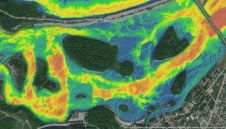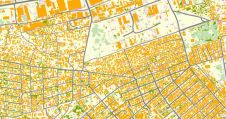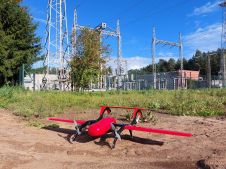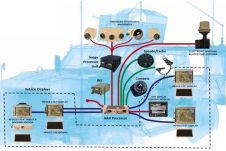Geospatial Data Essential to Protect Snow Leopard in Mongolia
Intermap has entered a new collaboration with The Snow Leopard Trust to provide high-resolution elevation models to scientists who are aiding the conservation of snow leopards in Mongolia by researching the species' behaviour. Intermap is a global leader in geospatial content development and intelligence solutions.
The Snow Leopard Trust started the first long-term study of snow leopards in the Tost Mountains in Southern Mongolia in 2008. The snow leopard is a top predator with a habitat range of over two million square kilometres, but scientists estimate there may be only between 3,900 and 6,400 snow leopards left in the wild. Researchers are keen to learn more about snow leopard ecology, such as how the snow leopards use the mountainous terrain, to guide the conservation of the species. Intermap is an acknowledged expert at modelling complex, dynamic mountainous terrain in austere environments. Intermap is supporting this exciting project by providing 3D digital elevation models (DEMs) in Southern Mongolia.

3D elevation datasets and GPS tracking data
TheSnow Leopard Trustis currently exploring whether snow leopards stay longer at kill sites in rugged terrain, which offer better escape routes and hiding places. Intermap's NEXTMap high-resolution, 3D digital elevation model and all-domain routing analysis will be used to conduct studies along with the GPS tracking data from snow leopard collars to follow their movement and determine if terrain ruggedness affects the amount of time they spend at kill sites. The Snow Leopard Trust began its study using a 30m-resolution DEM. The initial results were unclear because cliffs, hills and other terrain features are not well represented in a coarse DEM. Intermap's high-resolution, 3D elevation datasets are readily available to be integrated into studies like this or other all-domain command and control analysis for any location in the world. The Snow Leopard Trust was able to access Intermap's high-resolution DEM for the study area and start scenario modelling along with data collected in the field in a quick and efficient manner.
Using Intermap's DEM, the preliminary results suggest that terrain did affect snow leopard behaviour around kill sites where there was adequate conceal and cover. Researchers found that snow leopards stayed longer at kill sites of their largest prey when the kills were made in rugged terrain. They also found that snow leopards stayed longer at the kill sites of wild prey compared with domestic prey, when the prey were larger in size. Located just miles from the Chinese border, the Tost Mountain region covers Mongolia's two largest, strictly protected areas. These results suggest that potential risk from humans has changed how snow leopards behave at their kill sites in the Tost Mountain region. This study will help The Snow Leopard Trust gain more insight into the patterns of snow leopards and develop ways to help conserve the species.
"We are pleased to support the Snow Leopard Trust's conservation efforts in Mongolia," said Patrick A. Blott, Intermap Chairman and CEO. "Intermap's high-resolution terrain data is a rapid, efficient and accessible solution for the researchers to analyse the mountainous terrain in the snow leopard habitat and learn more about their behaviour. We are building on our history by innovating and developing the future of geospatial intelligence with next-generation technology and capabilities."
Read more about the study here.

Make your inbox more interesting.Add some geo.
Keep abreast of news, developments and technological advancement in the geomatics industry.
Sign up for free












